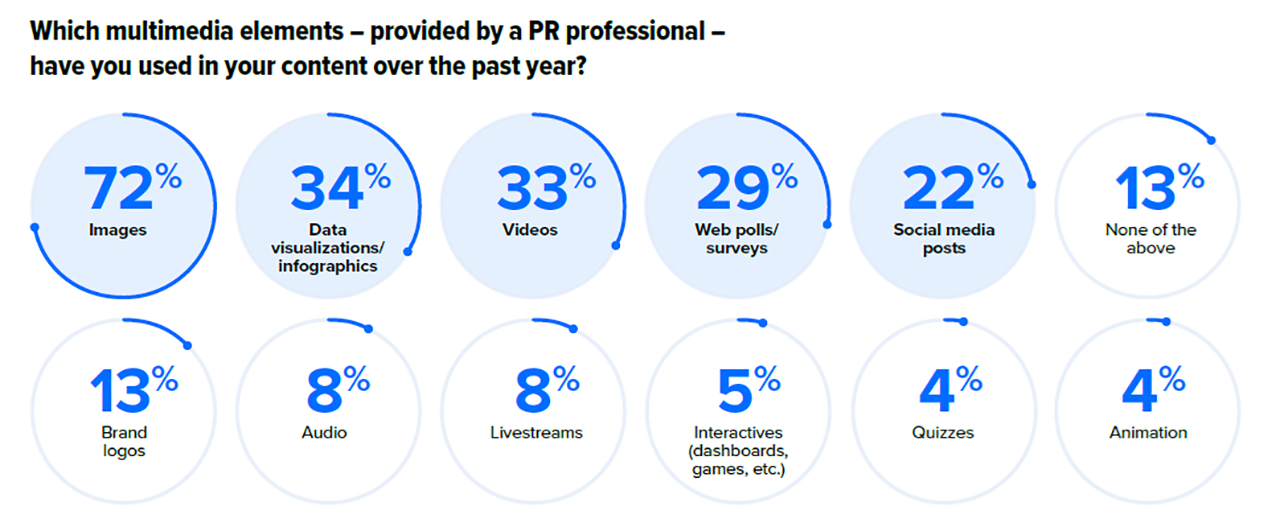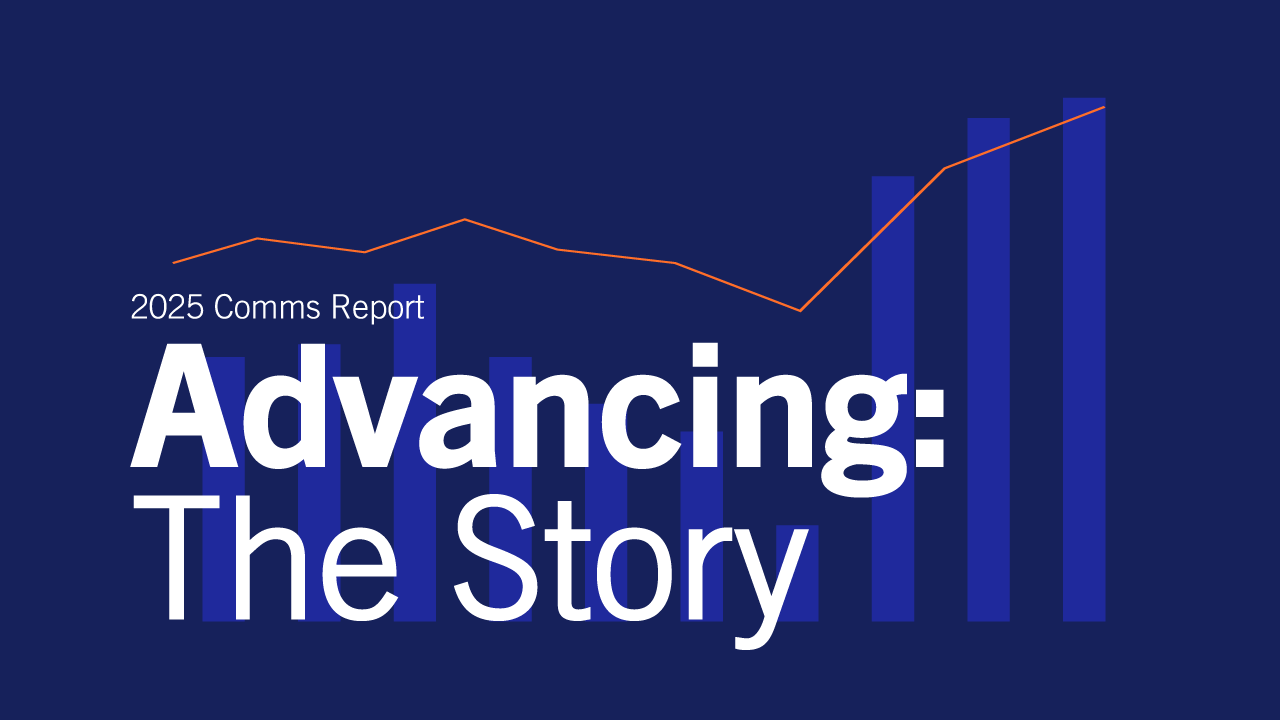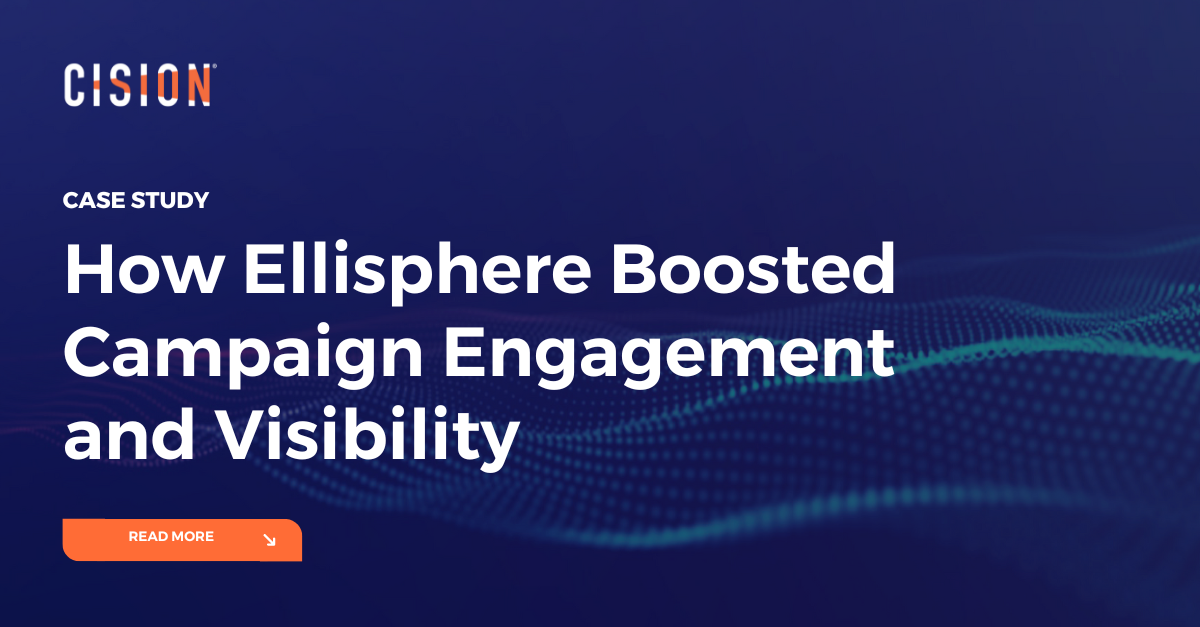PR and communications teams now have access to more data than ever before. From customer information to metrics around earned, owned, paid, and shared media, there’s a wealth of data out there to inform decisions that have an impact on your brand.
Having access to data is one thing, unlocking value from it is another. According to the 2024 Global Comms Report, 42% of respondents said “very much so” when asked if they are relying on data and analytics more than they did a year ago, up significantly from 30% who said the same a year prior. In addition, 59% have a dedicated data analyst on their team.
However, when asked to identify the factors currently challenging their public relations and comms efforts the most, 50% said an “inability to measure impact effectively.”
Every comms team will be at a different point in their data journey, but wherever you are, there are several ways you can leverage data and public relations analytics to enhance your outreach, track campaign success, and optimize your efforts.
1. Use Data in Your Pitches and Media Outreach
According to the 2024 State of the Media Report, 37% of journalists are relying more on data to shape their editorial strategy compared to last year. Moreover, 48% said PRs can make their jobs easier by supplying data and research for their stories.
With that in mind, supplementing your pitches and outreach with data and statistics that add credibility to your story will give you a better chance of winning favor with journalists and securing coverage. Remember, journalists are in search of facts and want their content to stand up under scrutiny – verified data will add weight and authority to those stories.
2. Use Data Visualizations in Your Next Press Release
From YouTube to TikTok, Instagram and Facebook, the content we consume is becoming more visually driven. A good image or visual can stop us scrolling and make us pay attention to a social media post or online article.
Journalists think about this, too. They know the value of a compelling visual – and 34% of them say they used PR-supplied data visualizations in stories they recently produced.

Though it’s essential your press releases deliver killer headlines and copy, images and data visualizations can help sell your story to a reporter in a more impactful way. If you have original research to hand, it's well worth pulling the key data points into line graphs, bar, or pie charts to tell your story visually.
3. Arm Your Spokespeople with Data
Whether your spokespeople are heading out to a conference, engaging in media interviews, or responding to a crisis, supplying them with relevant data can significantly enhance their credibility and impact.
Data-driven insights will help them speak with authority on industry trends, company performance, or consumer behavior. For instance, when addressing journalists, spokespeople can use specific statistics to back up claims, offer evidence-based perspectives, and navigate tough interrogations with confidence.
Data not only helps in building trust but also ensures that your brand’s messaging is consistent and factually grounded.
4. Track Data on PR Campaigns to Prove ROI
According to the 2024 Global Comms Report, 40% of PR teams rate their ability to demonstrate ROI of earned media as satisfactory, below average, or poor.
There’s clearly room for improvement, and by measuring data on your PR campaigns – such as media mentions, share of voice, sentiment analysis, and website traffic – you can more effectively gauge the impact of your campaign efforts. These metrics help you demonstrate how your PR activities contribute to business goals, such as brand equity, lead generation, or customer retention.
Additionally, using data to prove ROI can justify your PR budget and secure future investment in your initiatives. Gathering these metrics also allows you to optimize your campaigns in real time, ensuring you get the most value from your efforts.
5. Analyze and Benchmark Against Your Competitors
Your analysis doesn’t just have to include your own data, it can also encompass your competitors. With a media monitoring tool like CisionOne, you can analyze your competitors' media coverage, social media posts, and brand sentiment.
Benchmarking your performance against competitors allows you to spot gaps, capitalize on their shortcomings, and refine your messaging to better resonate with your target audience. It also provides valuable insights into industry trends and best practices, helping you to innovate and stay competitive.
Consistent analysis of your competitors ensures that your PR efforts are not in isolation, and you’re constantly aware of what’s happening around you. If you want to position your brand as a leader in the field, it’s important to know how you stack up against the competition.
6. Use PR Analytics to Inform Future Campaigns
You can dive into retrospective data with PR analytics – think Google Analytics, Adobe Analytics, and social media tools like Brandwatch. However, this isn’t just data for measuring past performance – it can be a powerful tool for shaping future initiatives.
By analyzing data from previous campaigns, you can identify what worked and what didn't, then refine your strategy moving forward. For example, if you notice that certain types of content or media outlets consistently generate higher engagement or more positive sentiment, you can prioritize these in your future outreach.
Furthermore, understanding which messages resonated most with your target audience can help you craft more compelling narratives. By continually learning from past data, you can ensure that each new campaign is more targeted, efficient, and effective than the last.
The Bottom Line
Having a data strategy isn't a 'nice to have' anymore – it's a critical tool that can transform your PR campaigns from good to great, or great to outstanding. Effectively leveraging data can enhance most (if not all) aspects of your PR efforts, from pitching stories and crafting compelling press releases to proving ROI and gaining an edge over your competitors.
A reliance on data in PR is not just about keeping up with industry trends but about driving real, measurable impact. By embracing data, PR teams can make more informed decisions and continually evolve their approach to achieve bigger wins.
To learn more about how Cision can help you navigate the challenges and opportunities of data in PR, get in touch to speak with an expert today.
Most Recent Posts
Cision Resources
-
E-books and Guides
Comprehensive how-to guides on strategy and tactics
-
Case Studies
What are other brands doing – and how can we learn from them?
About Simon Reynolds
Simon is the Content Marketing Manager at Cision UK. He worked as a journalist for more than a decade, writing on staff and freelance for Hearst, Dennis, Future and Autovia titles before joining Cision in 2022.
Learn More. Do More. demo new
PR Tips, Case Studies, and Product Updates

[On-Demand Webinar] The Next Generation of Media Intelligence: From Gorkana to CisionOne
Explore CisionOne, a revolutionary media intelligence platform, and the evolution of Gorkana. Learn key features and strategies from Luke Williams, CisionOne Product Marketing Manager. Elevate your media outreach to new heights!


